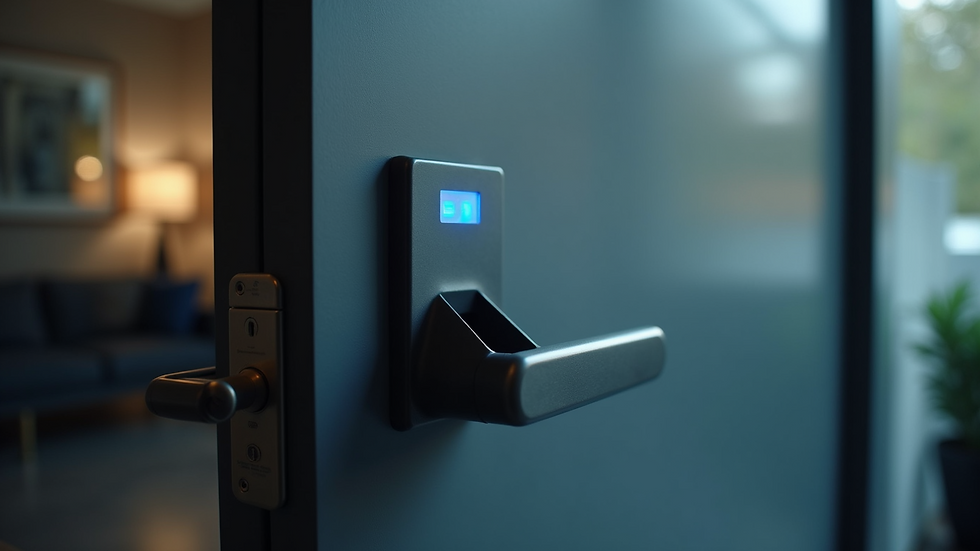Improve Security Crisis Management with Advanced Tools
- CQTAfrica creative department
- Nov 10
- 4 min read
Effective security risk management is essential for organisations seeking to protect their assets, personnel, and reputation. The evolving threat landscape demands sophisticated approaches that combine technology, intelligence, and strategic planning. This article explores how advanced tools can enhance security risk management, providing practical insights and recommendations for organisations aiming to strengthen their security posture.
The Importance of Security Risk Management
Security risk management involves identifying, assessing, and mitigating risks that could compromise an organisation’s operations or safety. It is a continuous process that requires vigilance and adaptability. For businesses ranging from small enterprises to international corporations, the stakes are high. Failure to manage risks effectively can lead to financial loss, legal consequences, and damage to brand integrity.
A robust security risk management framework enables organisations to:
Anticipate potential threats
Allocate resources efficiently
Respond swiftly to incidents
Maintain business continuity
Implementing advanced tools is a critical step in achieving these objectives. These tools provide real-time data, predictive analytics, and automated responses that enhance decision-making and operational efficiency.

Leveraging Technology for Enhanced Security Risk Management
Technology plays a pivotal role in modern security risk management. The integration of digital tools allows for comprehensive monitoring and rapid response. Key technologies include:
Surveillance Systems
High-definition cameras with night vision and motion detection capabilities provide continuous monitoring. Integration with analytics software enables automatic identification of suspicious activities.
Access Control Solutions
Biometric scanners, smart cards, and mobile credentials restrict access to sensitive areas. These systems log entry and exit times, supporting audit trails and investigations.
Threat Intelligence Platforms
These platforms aggregate data from multiple sources to identify emerging threats. They provide actionable insights that inform security strategies and resource allocation.
Incident Management Software
Centralised platforms facilitate the reporting, tracking, and resolution of security incidents. Automated workflows ensure timely communication and accountability.
Cybersecurity Tools
Firewalls, intrusion detection systems, and encryption protect digital assets. Integration with physical security systems creates a holistic defence mechanism.
Adopting these technologies requires careful planning and training. Organisations must ensure compatibility with existing infrastructure and compliance with regulatory standards.
Integrating Advanced Tools into Security Operations
Successful integration of advanced tools into security operations demands a structured approach. The following steps are recommended:
Assessment of Current Capabilities
Conduct a thorough review of existing security measures to identify gaps and redundancies.
Selection of Appropriate Technologies
Choose tools that align with organisational needs, budget, and scalability requirements.
Training and Development
Equip security personnel with the skills to operate new systems effectively.
Policy and Procedure Updates
Revise security protocols to incorporate new technologies and workflows.
Continuous Evaluation and Improvement
Regularly assess the performance of tools and processes, making adjustments as necessary.
This approach ensures that technology enhances rather than complicates security operations.

Enhancing Response Capabilities with Real-Time Data
Real-time data is a cornerstone of effective security risk management. Advanced tools provide immediate information that supports rapid decision-making. Examples include:
Live Video Feeds
Enable security teams to monitor situations as they unfold, facilitating prompt intervention.
Automated Alerts
Notify personnel of anomalies such as unauthorized access or perimeter breaches.
Geolocation Tracking
Supports the monitoring of assets and personnel, improving coordination during emergencies.
Data Analytics
Identify patterns and predict potential incidents, allowing for proactive measures.
By utilising real-time data, organisations can reduce response times and mitigate the impact of security incidents.
The Role of Intelligence-Led Security Solutions
Intelligence-led security solutions combine data analysis with expert insight to anticipate and counter threats. This approach aligns with the goals of security crisis management, which emphasises preparedness and resilience.
Key components include:
Risk Profiling
Understanding the specific vulnerabilities and threat actors relevant to the organisation.
Scenario Planning
Developing response plans for various potential incidents.
Collaboration with External Agencies
Sharing intelligence with law enforcement and industry partners enhances situational awareness.
Continuous Learning
Incorporating lessons from past incidents to refine strategies.
Intelligence-led solutions enable organisations to move beyond reactive measures, fostering a proactive security culture.
Recommendations for Implementing Advanced Security Tools
To maximise the benefits of advanced tools in security risk management, organisations should consider the following recommendations:
Prioritise Integration
Ensure that new tools work seamlessly with existing systems to avoid operational silos.
Focus on User Experience
Design interfaces and workflows that are intuitive for security personnel.
Maintain Data Security
Protect sensitive information collected and processed by security tools.
Invest in Training
Regularly update staff skills to keep pace with technological advancements.
Establish Clear Metrics
Define key performance indicators to measure the effectiveness of security measures.
Engage Stakeholders
Involve leadership and relevant departments in security planning and implementation.
These steps support sustainable improvements in security risk management.
Advancing Security Preparedness for the Future
The security landscape will continue to evolve, driven by technological innovation and emerging threats. Organisations must remain vigilant and adaptable. Advanced tools offer significant advantages, but their success depends on strategic implementation and ongoing management.
By embracing intelligence-led approaches and leveraging real-time data, organisations can enhance their ability to anticipate, prevent, and respond to security challenges. This commitment to continuous improvement is essential for safeguarding assets and maintaining trust.
Security risk management is not a static task but a dynamic process that requires dedication and expertise. The integration of advanced tools represents a critical investment in organisational resilience and long-term success.




Comments